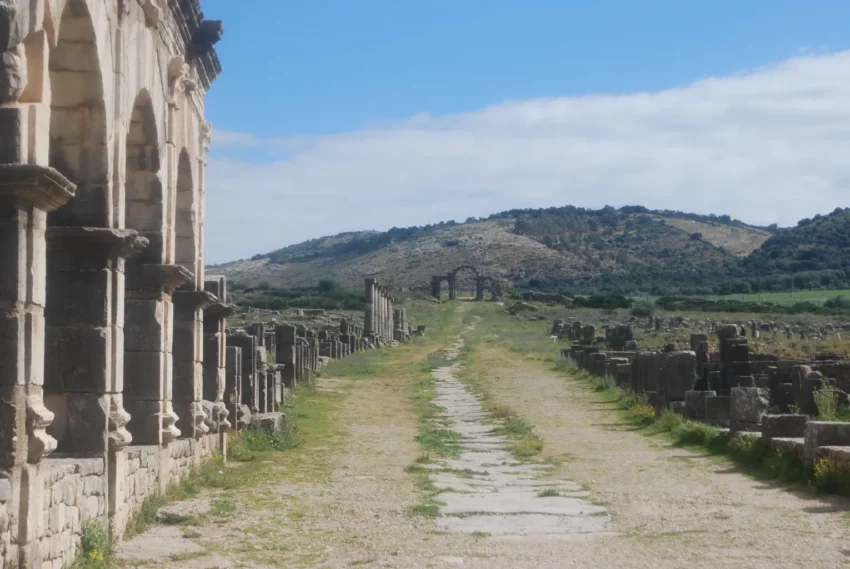Historical Overview of Volubilis: A Berber-Roman City
Volubilis, a partly-excavated city located near Meknes, Morocco, represents a significant archaeological site with roots stretching back to the 3rd century BC. Initially a Berber settlement, it later became a proto-Carthaginian city before serving as the capital of the Kingdom of Mauretania under King Juba II. The city’s strategic location in a fertile agricultural area facilitated its development and prosperity, particularly under Roman rule from the 1st century AD.
Get your dose of History via Email
Development and Expansion under Roman Rule
The Roman influence on Volubilis was profound, with the city experiencing rapid growth from the 1st century AD. By the late 2nd century, it covered approximately 42 hectares and was fortified with a 2.6 km circuit of walls. The city was adorned with significant public buildings such as a basilica, a temple, and a triumphal arch, reflecting its importance and wealth, which was primarily derived from olive cultivation.
Decline and Fall
Volubilis faced decline after the Roman withdrawal around 285 AD, following the empire’s strategic reorganization under Diocletian. The city continued to be inhabited, transitioning through phases as a Latinised Christian community and later as an early Islamic settlement. By the 11th century, the political center had shifted to Fes, leading to Volubilis’s gradual abandonment.
Archaeological Significance and UNESCO Recognition
The ruins of Volubilis remained relatively intact until the mid-18th century when they suffered damage from an earthquake and subsequent looting. Archaeological interest in the site began in earnest in the 19th century, with significant excavations occurring during French rule in Morocco. These efforts revealed many fine mosaics and restored several public buildings and houses. In 1997, UNESCO listed Volubilis as a World Heritage Site, recognizing it as “an exceptionally well-preserved example of a large Roman colonial town on the fringes of the Empire.”
The City’s Layout and Infrastructure
Volubilis featured a sophisticated layout with a main street, the Decumanus Maximus, lined with shops and public buildings. The city’s infrastructure included an aqueduct system, which supplied water for public baths and residential areas, and a network of drains for sanitation.
Public Buildings and Monuments
The city’s architecture showcased a blend of local and Roman influences. Key structures included the basilica used for administrative purposes, the Capitoline Temple dedicated to Jupiter, Juno, and Minerva, and the Arch of Caracalla, erected to honor the emperor Caracalla. These buildings not only served practical functions but also symbolized Roman civic and religious ideals.
Economic Activities
Volubilis was a center for olive oil production, a crucial economic activity that influenced many aspects of city life. The city housed numerous oil presses and was also a vibrant commercial hub with various shops and marketplaces.
Conclusion
Volubilis stands as a testament to the complex cultural and historical interactions between the indigenous Berber populations and the Romans in North Africa. The site offers invaluable insights into the urban and economic development of the region during antiquity and serves as a poignant reminder of the historical continuity and transformations across centuries.
Sources:

